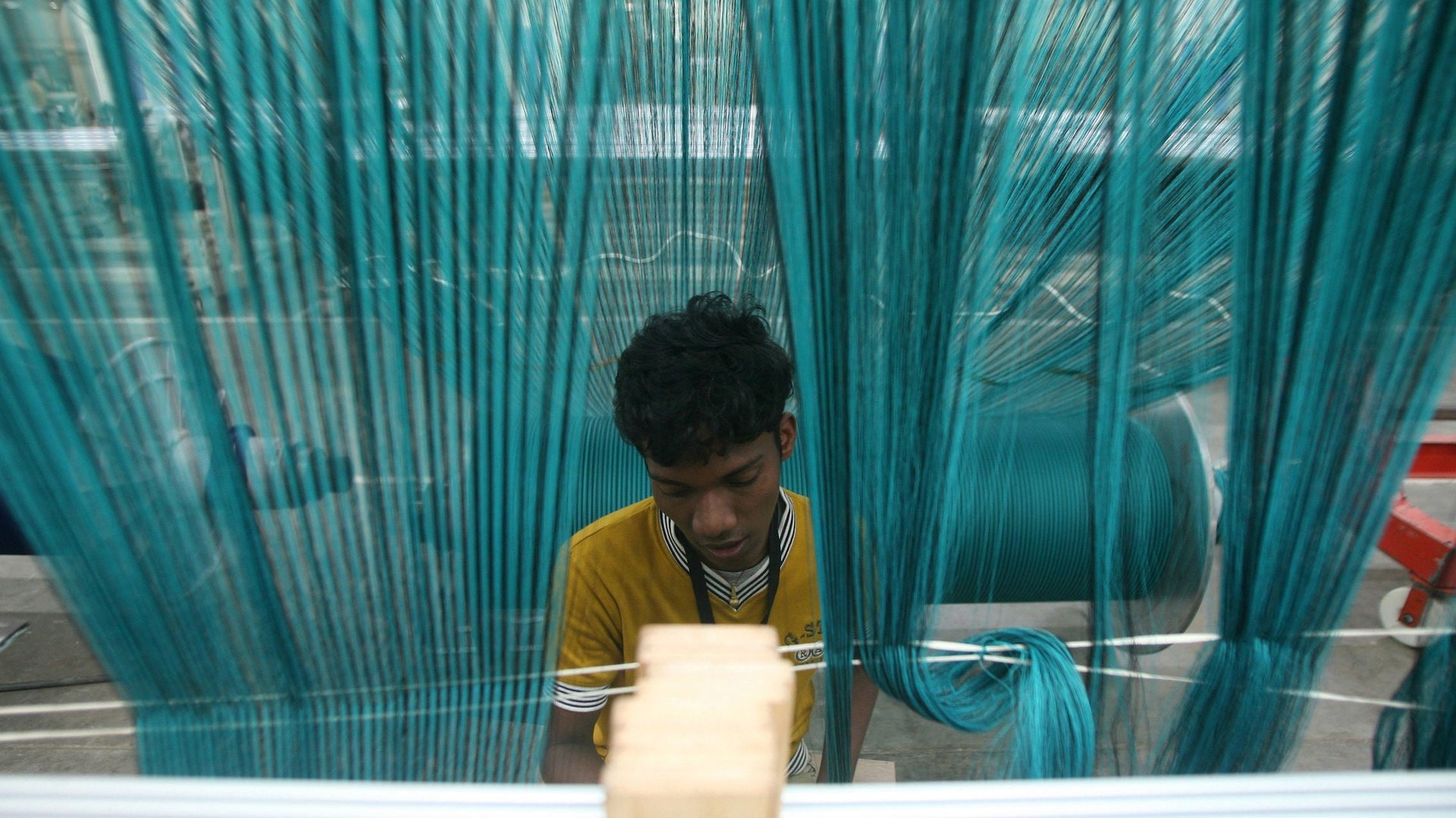India’s plummeting rupee is a boon for its second-largest employer
A falling rupee has been plaguing India’s economy for months. But there is at least one silver lining: It’s making exports in the country’s struggling garment industry more attractive to foreign buyers.


A falling rupee has been plaguing India’s economy for months. But there is at least one silver lining: It’s making exports in the country’s struggling garment industry more attractive to foreign buyers.
India’s textile sector, the country’s largest employer after agriculture (pdf, p. 2), contributes about 4% to the country’s GDP. But despite decades of economic expansion and a large, young workforce, India has so far failed to realize its potential as a global garment producer and exporter, thanks in part to poor infrastructure and restrictive regulations. Electricity outages, high worker turnover and regulations that limited investment in factories have all held the industry back. Although India is already the world’s third largest garment exporter after China and the European Union, it lags far behind its rivals. India sells about $32 billion worth of textiles overseas, compared to China’s estimated $260 billion and the EU’s $193 billion. Bangladesh—a country with a population a fraction the size of India’s—exports around $21 billion.
But India’s garment manufacturers are getting some relief from the country’s currency woes. The rupee has dropped roughly 20% since the beginning of the year, spurred on by fears that the US Federal Reserve would begin unwinding its stimulus program. “India has screwed up, but this is its time,” director of textile firm Matrix Clothing Gautum Nair told the Financial Times (paywall) in July. The government also extended a subsidy program for industries including the garment sector in April to help boost exports. Rising wages in China and protests over worker conditions in Bangladesh’s textile industry have also helped. One company is considering housing garment workers in dorms (paywall) on campus to lower the cost of living for urban factory workers—a lesson learned from Chinese factories.
The effects are clear. Garment exports have already grown by more than 12% between April and August, compared to the year before, Vijay Mathur, secretary-general of India’s Apparel Export Promotion Council said (paywall). But sustaining those gains won’t be easy. Factories said this month that they may leave the state of Rajasthan, despite government pledges of support, because living costs in cities are too high for workers, who are often migrate from rural areas. A falling local currency also has the unwanted effect of raising input costs for imported raw materials and machinery.
No wonder expectations are moderate. Mathur expects revenue from the sector to reach about $15 billion next year, a 16% increase from the year, before below the government’s previously stated goal of $17 billion.